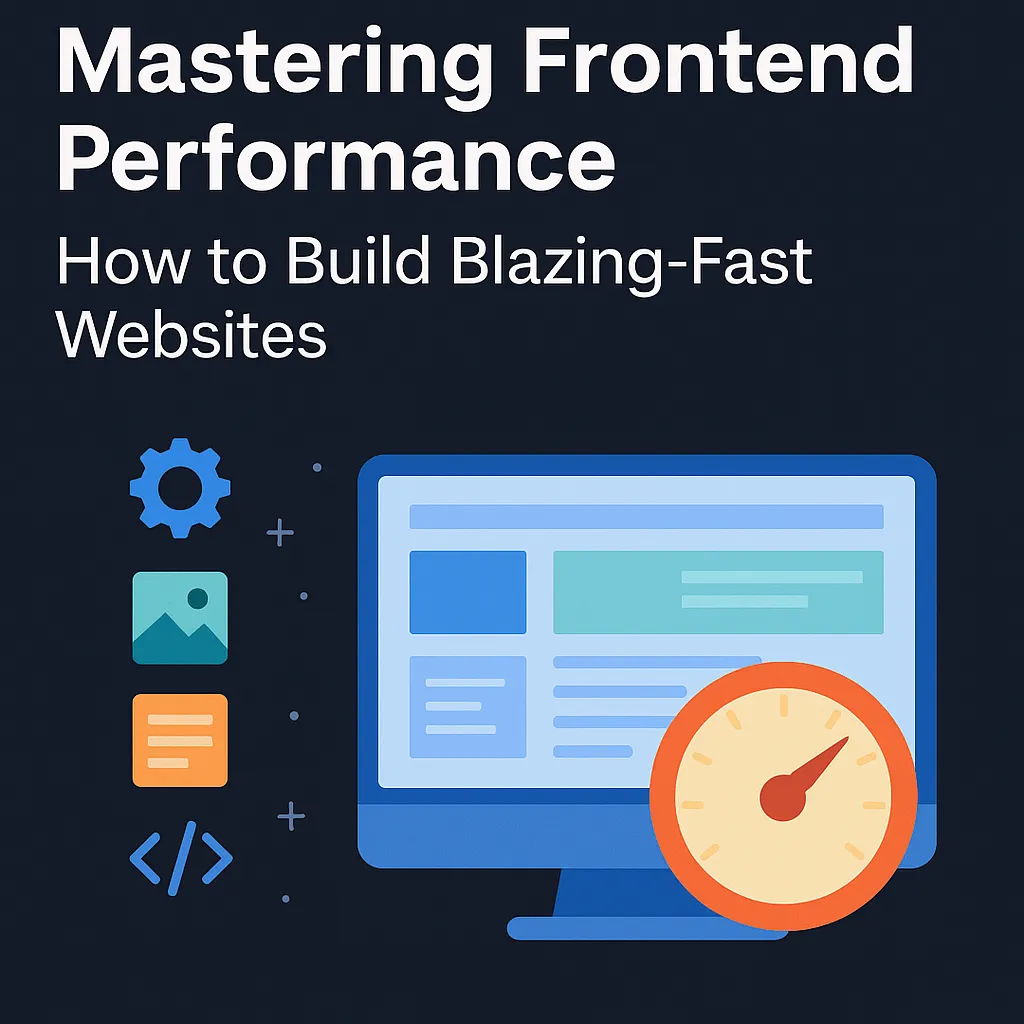Speed is everything on the modern web. A fast website isn’t just nice to have—it directly impacts user engagement, SEO, conversions, and even revenue. Whether you’re a solo WordPress dev or working on a React-based SPA, frontend performance is a non-negotiable skill.
In this guide, we’ll break down the frontend performance playbook for 2025. We’ll cover the strategies, tools, code examples, and mindset shifts needed to build lightning-fast websites without sacrificing UX or design.
🧠 Why Frontend Performance Matters
- Better SEO: Google uses Core Web Vitals as a ranking factor.
- Lower Bounce Rate: Users abandon slow sites in seconds.
- Higher Conversion Rates: Speed boosts trust and engagement.
- Accessibility & UX: Performance improvements often benefit all users, including those on slow connections or older devices.
🔍 Audit First: Know Where You Stand
Before optimizing, you need to diagnose. These tools will give you a baseline:
🚀 Key Frontend Performance Strategies
1. Optimize Critical Rendering Path
The critical rendering path (CRP) determines how quickly a browser can render content. You can improve it by:
- Minimizing render-blocking resources (CSS, fonts, JS)
- Inlining critical CSS for above-the-fold content
- Deferring non-critical JS with
deferorasync
2. Lazy Load Everything
Lazy loading defers resource loading until they’re needed. This includes:
- Images:
<img loading="lazy">or with JS - Videos: Use a preview image and load the video on interaction
- Third-party embeds (YouTube, Maps): Load only on scroll or click
3. Compress and Resize Images
Use modern formats like .webp or .avif, and tools like:
<picture>
<source srcset="image.webp" type="image/webp">
<img src="image.jpg" alt="My image" loading="lazy">
</picture>4. Minify and Bundle CSS/JS
Use build tools like Webpack, Vite, or esbuild to bundle and minify your assets.
npm install --save-dev terser cssnanoAlso consider using HTTP/2 which allows multiple parallel file downloads, reducing the need for bundling everything into one file.
5. Eliminate Unused CSS and JavaScript
Use tools like:
- PurgeCSS
tree-shakingin Webpack or Rollup- Unused-CSS.com (especially for WordPress)
6. Use a CDN (Content Delivery Network)
CDNs like Cloudflare or BunnyCDN cache your assets closer to users worldwide, improving latency and offloading traffic from your origin server.
🧱 Fonts: One of the Biggest Bottlenecks
Web fonts can delay your First Contentful Paint (FCP). Optimize them by:
- Using fewer weights/styles (e.g., only 400 + 700)
- Self-hosting fonts for control and caching
- Preloading fonts with
<link rel="preload"> - Using
font-display: swap;to avoid invisible text
⚙️ WordPress-Specific Optimization Tips
- Use lightweight themes like Frost or GeneratePress
- Limit plugins—each one can add render-blocking CSS or JS
- Use a caching plugin like WP Rocket or FlyingPress
- Dequeue unnecessary styles/scripts using
wp_dequeue_style() - Disable emojis and embeds:
// Remove emojis
remove_action( 'wp_head', 'print_emoji_detection_script', 7 );
remove_action( 'wp_print_styles', 'print_emoji_styles' );
// Remove embed script
function remove_wp_embed() {
wp_deregister_script( 'wp-embed' );
}
add_action( 'wp_footer', 'remove_wp_embed' );📦 Modern Tooling: Beyond the Basics
If you’re using a modern frontend stack (React, Vue, Svelte, etc.), here’s where the gains live:
- Code splitting with dynamic imports
- SSR or SSG with frameworks like Next.js or Astro
- Client hydration minimization (e.g. partial hydration)
- Preloading dynamic routes for better navigation speed
// Example: dynamic import in React
const ContactForm = React.lazy(() => import('./ContactForm'));📈 Measuring Success
Don’t just optimize blindly. Measure your changes using:
- Core Web Vitals: LCP, FID, CLS
- Real user metrics (RUM) via Cloudflare or Vercel Analytics
- Time to Interactive (TTI) and First Input Delay (FID)
💡 Bonus: Performance Mindset
Great frontend performance isn’t just about tools. It’s a philosophy:
- Every KB counts
- Design for performance from the start
- Measure before and after
- Don’t trust local dev builds—test production!
🧪 Case Study: From 5s to 1.2s Load Time
We applied these strategies to a bloated WordPress blog and cut load time by 76%:
- Deactivated 8 unnecessary plugins
- Replaced jQuery-heavy slider with CSS-only alternative
- Lazy-loaded images and iframes
- Switched to BunnyCDN + GZIP + critical CSS plugin
Result: from 5.1s to 1.2s on Lighthouse and 95+ scores across the board.
🏁 Final Thoughts
Frontend performance isn’t a one-time job—it’s a habit. With more users browsing on mobile and Core Web Vitals driving search, speed is now table stakes. By mastering the fundamentals and staying updated on modern tools, you’ll deliver better experiences and outperform slower competitors.
Which of these tips are you already using? Drop your stack or favorite tools in the comments!


Leave a Reply